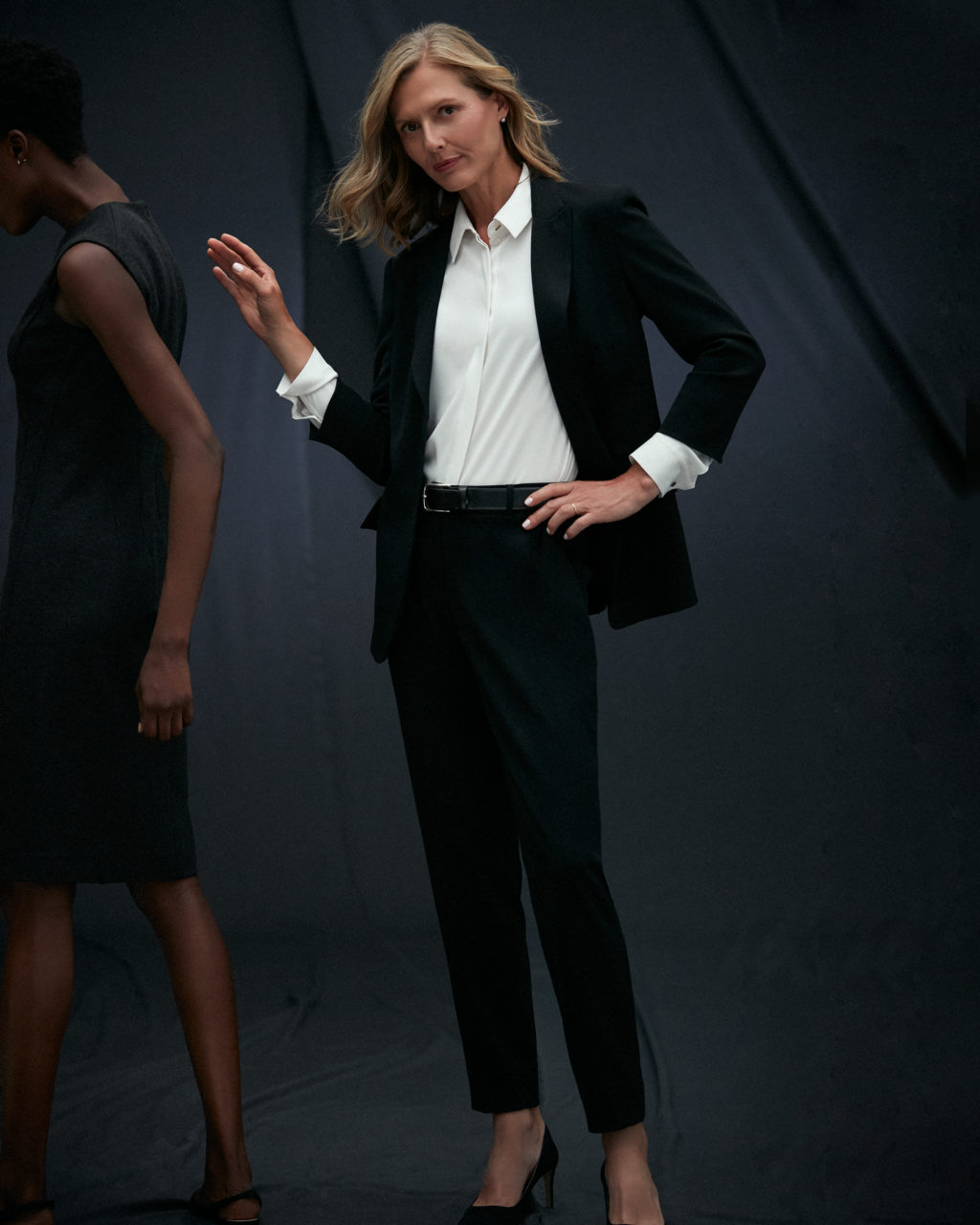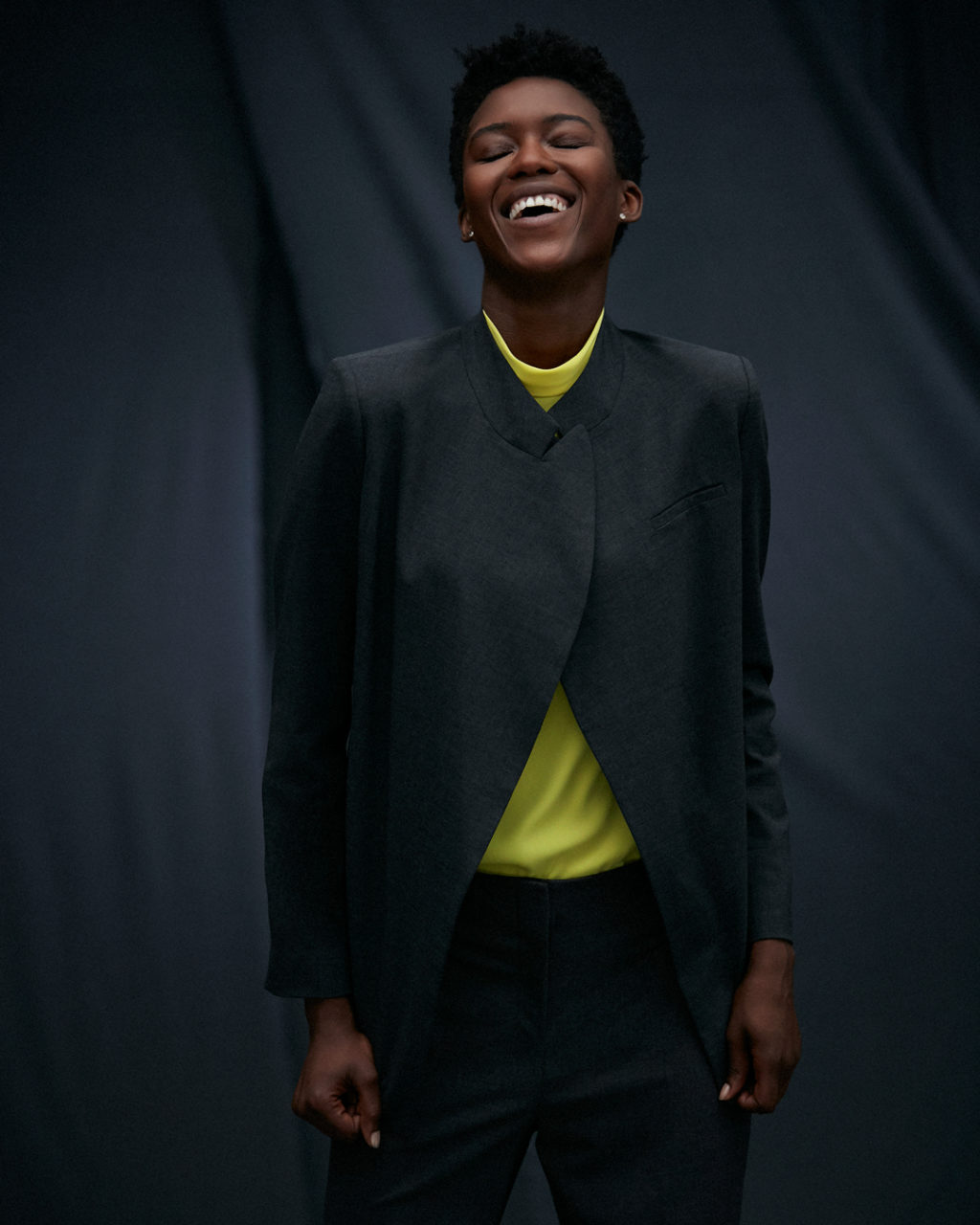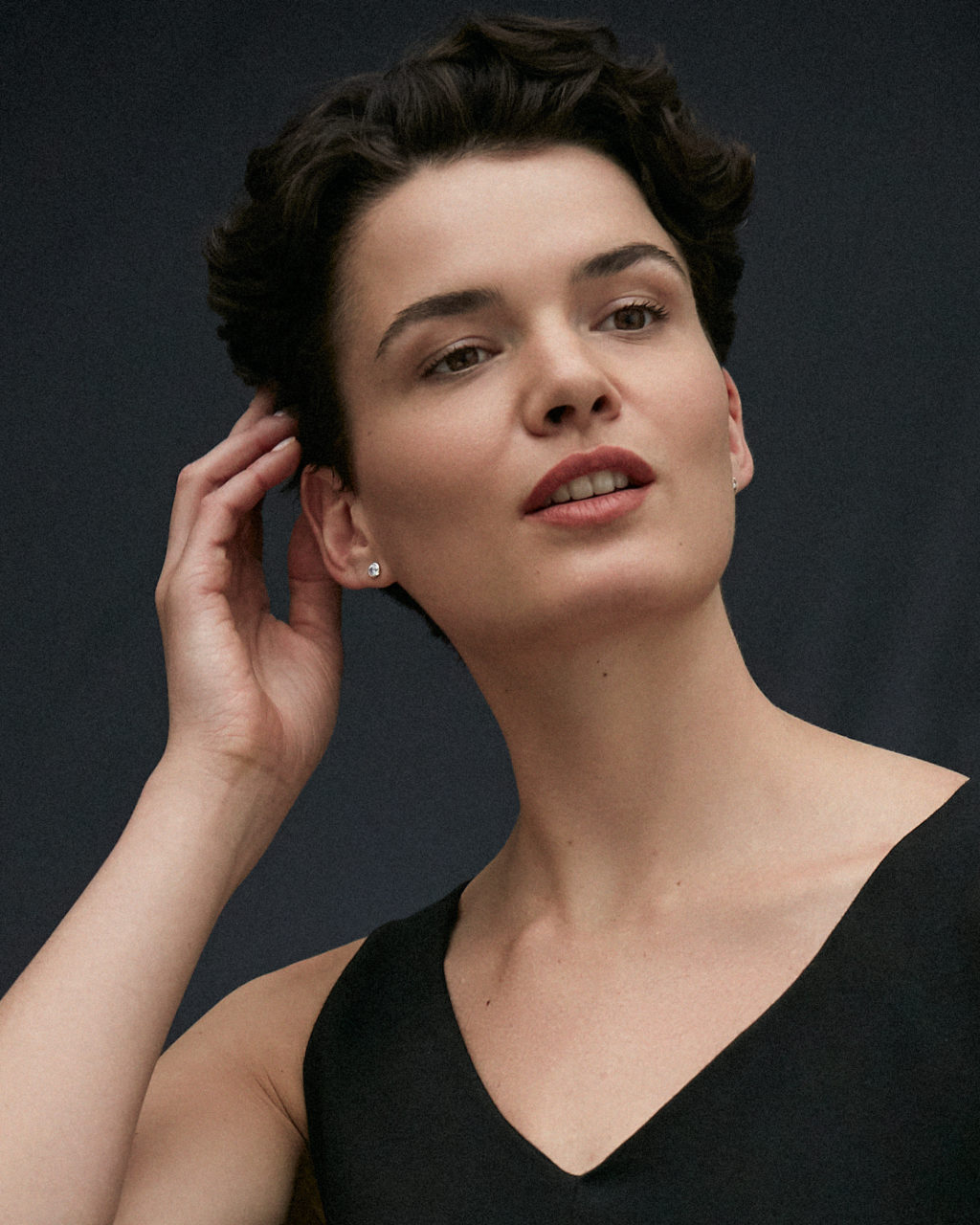How to Make Your Interview Outfit More ‘You’
August 31, 2018 | Filed in: Your Closet
Interviews are always nerve-wracking—on top of wanting to sound like the most accomplished version of yourself, you also want to look your best. And we live in a visually focused world where the way you look is, undeniably, an integral part of your personal brand. Why not let your appearance say as much about who you are as your CV? Here’s how to make sure you’re appropriately styled, while still feeling like yourself.
1. Do your research.
Before you start flinging hangers from your closet, you need to understand the style culture of the company you’re considering. Of course you want to look like you, but you also want to look like them. Every office has a dress code of sorts—modes of appearance that most people follow, most of the time. Is it super traditional (suits) or a little more relaxed (separates)? Are the women wearing mostly dark separates or a smattering of color and pattern? Dress shoes or flats? Are casual Fridays a part of the mix? Get intel from people who know (like a headhunter, if you used one, or people who are currently employed there). Even the company’s website, or the LinkedIn profiles of staffers, can inform you.
2. Amp it up.

The Carson blazer in light twill, the Lagarde shirt in cream, the Mejia pant in light twill, the Wide Strap belt, and the Bezel earrings in white gold.
Experts will say it’s wise to dress a belt notch above the job you’re going for, and for good reason: You’re there to impress and show respect, and dressing up ever so slightly checks both those boxes. Think about it: When has looking a little too nice been held against anyone, in any situation? That said, it’s wise to avoid anything that’s even marginally cocktail-esque. That means steering clear of lace, silk, satin, clutch bags, dangly earrings, rhinestone-accented anything and whatever else you’d consider party appropriate.
3. Wear what you know.
That is to say, wear something that you’ve worn before, that feels good when it’s on and stays put without even a moment of tugging, pulling, or tucking. And by all means, you do YOU. If sleek pants and a blazer is your jam, this is no time to try a dress. What you wear is telling of your personality, and the point is to let that message come through.
4. Include a hint of color.

The Sohee top in lemon and the Oliver jacket in gray melange, and the Bezel earrings in white gold.
It’s flattering, it’s memorable and it’s (hint, hint) a great way to frame your face. What color? Wear what you like, or what you’ve been told flatters you. This is also a good place to experiment without going too far (like doing a red shoe against all that black) and also an opportunity to make a style update without breaking the bank (like incorporating a color of the moment). People like color. People respond to color. People remember color. And when we say “people,” we mean the person on the other side of the desk with your résumé in their hands.
5. Have fun with accessories.

The Bezel earrings in white gold.
Even the most traditional suit or solid separates can get some extra oomph from bags, shoes, scarves, and jewelry. A statement necklace, a bold bag, a kicky scarf…you get the idea. The caveat, of course, is that you should choose one style element on that list, not all of them at the same time. Don’t be afraid to wear something unexpected or a little bit interesting. Your grandfather’s diving watch? Sure. An oversized canvas tote instead of a briefcase? Absolutely. A belt you nabbed on a trip to Vietnam? Go for it. Those little style moments, when appropriate, are memorable in the best possible way.
6. Get clothes tailored.
Tailoring has always been an integral component of men’s shopping, but women have somehow been conditioned to think clothes should fit right off the rack. Consider this: A little hemming, a bit of taking in, or a smidge of letting out is what truly makes the clothes you wear look (and, more importantly, feel) as if they were meant for your body. Tailoring is the ultimate way to personalize your look, but it’s also a salve for a multitude of sins: fluctuating weight, modernizing something a tad outdated, or a way to salvage the two-sizes-too-big sheath you scored on sale. Find yourself a good resource: Ask a large department store in your area (they often freelance), the concierge at a decent hotel, or the best-dressed man you know where they send their clothes.
7. Do a dress rehearsal.
Yes, the whole thing, including shoes and accessories. Put it all on and make sure it works. You want everything to fit, the hems to be long enough (skirts, dresses) or short enough (pants—no pooling, please), and the fabrics to be dense enough (no sheering out in bright light). Don’t just stand there, either: Sit like you would in an interview, in front of a full-length mirror, and make sure everything falls the way it should. Make changes or adjustments if need be, right then and there, until it feels just right. Now, go get that offer!





